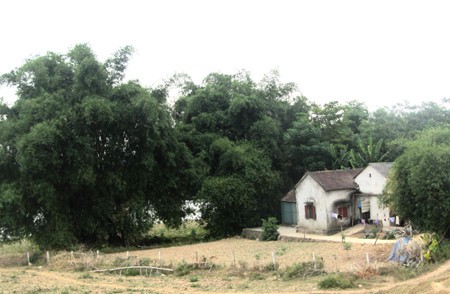A traditional Vietnamese village is typically small in size and is often located near a river or another water source. Surrounding the village are paddy fields, where the local villagers make their living.
In the past, almost every village in the Northern Delta, whether inside or outside the village dyke, was protected by a bamboo hedge. This hedge not only served as a defense against invaders but also provided building materials for the villagers.
The village gate, constructed with bricks and a sturdy ironwood door, defined the village’s territorial boundaries and showcased the artistry, status, and virtues of the villagers.
According to Doctor Dinh Hong Hai of National University Hanoi, “A village typically had two gates. The main gate, often adorned with parallel sentences, displayed intricate architecture. The rear entrance, located at the back of the village, was used during funeral processions. A village gate embodies intangible cultural values.”
From the village gate, a network of brick-paved alleys connects the houses. The village’s main road leads to the communal house, a sacred place situated in an auspicious location determined by geomancy. The communal house honors the village’s Tutelary God, the village’s founders, or heroes who sacrificed their lives for the community or the nation. It is also the venue for important village events.
According to architect Le Quang Ngoc, “The communal house is large and exudes a dignified atmosphere. Prosperous villages have larger communal houses.”
Other architectural features of Vietnamese villages harmonize with the country’s natural beauty. In close proximity to the village gate stands a century-old banyan tree, offering a tranquil resting spot for local farmers after a day of work in the fields. The village well provides water for the entire community and serves as a witness to the village’s history and generations of ups and downs. Religious structures in the village include temples, pagodas, or clan worshipping houses adorned with yin-yang tiles and curved spearheads that reach towards the sky, symbolizing the aspirations of the villagers.
Houses are built closely together along the village alleys. Each house has a front yard and a garden. Wealthier villagers may have houses with 5 or 7 rooms, while poorer houses have 3 rooms and 2 lean-tos. An ancestor worshipping altar in the main room is a staple in rural Vietnamese families. Additionally, a low wooden platform provides a space for family members and guests to sit and socialize.
The structural design of a traditional Vietnamese village creates a peaceful ambiance that is cherished by those who are separated from their hometown.




